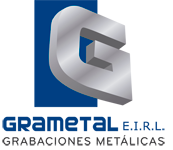
People with alcoholism have intense cravings for it, and this can cloud their thinking in everyday situations. They might also experience physical and psychological withdrawal symptoms when they go without alcohol. These symptoms can include shakiness, anxiety, and cold sweats. The combination of cravings and withdrawal often leads chronic alcoholics to drink at inappropriate times and places, such as first thing in the morning or before work.

Types of Behavioral Treatments
Dreaming about alcohol is a totally normal part of any sobriety journey. Sometimes the second day can be even harder than the first, because many of the physical symptoms remain, yet that previous excitement around the initial decision not to drink may be wavering. This is natural, especially because you may start experiencing alcohol cravings at this time.

Setting Mindful Drinking Goals
Research has identified relapse patterns in adolescents and adults recovering from addiction. In one study, two-thirds of the adults relapsed in social situations in which they experienced urges and temptations to drink or use. One third experienced relapses when they were experiencing negative emotions and urges to drink/use. By contrast, most adolescents relapsed in social settings when they were trying to enhance a positive emotional state. A small group of adolescents relapsed when facing interpersonal difficulties accompanied by negative emotions and social pressures to drink or use. Treatment and education can help adults learn techniques for handling urges and ways of accepting and managing negative emotions.
- It’s possible to develop a better relationship with alcohol and make more mindful, informed choices about drinking without total sobriety.
- The best way to quit alcohol while avoiding unpleasant withdrawal symptoms is to ask for help.
- Understanding the available treatment options—from behavioral therapies and medications to mutual-support groups—is the first step.
- Treatment and information aimed at adolescents can help them learn techniques for managing both positive and negative emotional states.
Stages of Recovery
- Below are samples of e-health tools developed with NIAAA funding.
- Many people with alcohol use disorder also have other mental health conditions like depression, anxiety, bipolar disorder, or schizophrenia.
- Some people frequently abuse alcohol without developing a physical or psychological dependence to it; however, they too can benefit from treatment for alcoholism recovery.
- Shame is having negative beliefs about yourself and your self-worth.
- It often raises many questions, especially regarding effective strategies for managing symptoms and ensuring safety.
From there, they travel to other parts of your body and affect organ systems, including the cardiovascular, immune, and nervous systems, along the way. If you’re thinking about suicide, are worried about a friend or loved one, or would like emotional support, the Lifeline network is available 24/7 across the United States. Remember that changing long-standing patterns is hard, takes time, and requires repeated efforts.
Starting with a Primary Care Provider

Sleep is essential for shoring up impulse control and fostering good decision-making. Another vital element of care during recovery is relapse prevention—learning specific strategies for dealing with cravings, stress, setbacks, difficult situations, and other predictable challenges. What is needed is any type of care or program that facilitates not merely a drug-free life but the pursuit of new goals and new relationships. There are many roads to recovery, and needs vary from individual to the next. Others do well on their own making use of available community resources. Sustaining behavior change until new patterns become ingrained is difficult under the best of circumstances.

Learn that you have choices and that you can maintain control. If any area of your life is out of control, it will not help you maintain lasting sobriety. Once you do return to work, it’s important to create a budget and take steps to safeguard yourself as work stress can be a relapse trigger. tips to quit drinking Having a chaotic or disorganized lifestyle can also hinder your recovery. It’s important to develop a structured daily and weekly schedule and stick to it.
How much alcohol is okay to drink?

This article discusses some of the common withdrawal symptoms and what helps with alcohol withdrawal. It also covers some of the different treatment options that are available. Foods rich in vitamins and minerals, like fruits, vegetables, lean proteins and whole grains, can support the https://ecosoberhouse.com/ body’s recovery. Hydration is also important, so drinking plenty of water and avoiding caffeine is advised. Some people find that smaller, more frequent meals help if nausea is an issue. A good diet won’t lessen withdrawal effects but will support your body’s ability to deal with them.
Three medications are currently approved in the United States to help people stop or reduce their drinking and prevent a return to drinking. These medications are prescribed by a primary care provider or other health care provider and may be used alone or in combination with counseling. Strictly speaking, sobriety is the state of being sober—not being under the influence of alcohol or drugs. However, the word is often used in different ways in different contexts. Many 12-step programs suggest that sobriety means total abstinence, which means never using the substance again.

